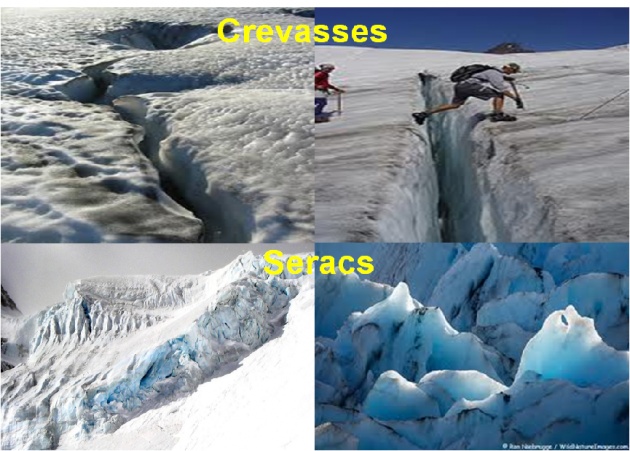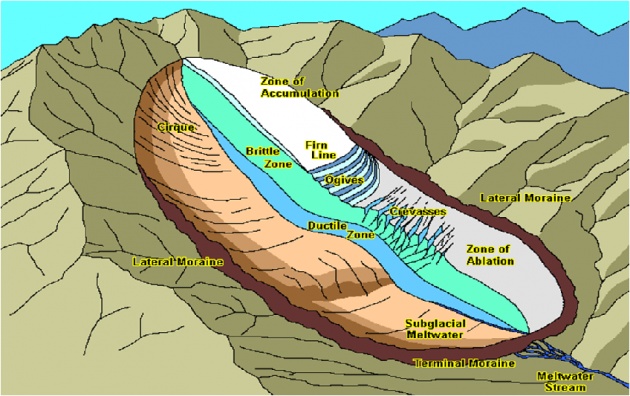- Glacier is a large permanent and uniform mass of ice that forms where the accumulation of snow exceeds its Ablation existing over many years, often centuries.
- Glaciers slowly deform and flow due to stresses induced by their own weight creating Crevasses.
- Seracs (a large pointed mass of ice in a glacier isolated by intersecting crevasses) and other distinguishing features. They also abrade the rock and debris from their substrate to create the eroded landforms such as Cirques (A steep bowl-shaped space formed deep in the mass of a glacier at its upper end) and
- Moraines(Moraine: unconsolidated and un cemented mass of till: boulders, pebbles, sand and mud) deposited by a glacier, often in the form of a long ridge). Glaciers are formed on the land only and are distinct from the thinner Sea-ice and Lake-ice which are formed on the surface of these water


- On the earth, 99% of glacial ice is present in the Polar Regions but glaciers may also be found in the big and very high mountain ranges and on a few high-latitude Oceanic Islands too
- Glaciation means to get covered with a glacier or subjected to or affected by the glacial action
- Ice age: It is also known as Glacial Age. It is defined as the Ice Age which started about 40 Ma and intensified 2.6 to 3 Ma i.e. in the beginning of Pleistocene Epoch. This period from 40 Ma to 3 Ma is a period of long-term reduction in the temperature of the earth's surface and atmosphere resulting in the presence and gradual expansion of continental Ice Sheets, Polar Ice Sheets and Alpine Glaciers
- Within a long-term ice age, individual pulses (sharp changes in the property of something) of cold climate are termed as Glacial Periods (or alternatively Glacials or Ice age) and intermittent warm periods are called Inter-glacials



